Deadlift: Which Grip is right for you ?
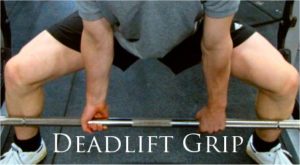 When looking at gripping the bar for a strong deadlift there are a couple of areas to consider. The first consideration is the width of the hands on the deadlift bar. The second and most debated aspect for powerlifters is the grip type: Double Overhand, Mixed Grip or Hook grip and which one is best for you as a powerlifter competing in deadlift.
When looking at gripping the bar for a strong deadlift there are a couple of areas to consider. The first consideration is the width of the hands on the deadlift bar. The second and most debated aspect for powerlifters is the grip type: Double Overhand, Mixed Grip or Hook grip and which one is best for you as a powerlifter competing in deadlift.
Hand Position on the Deadlift Bar
The differences between two equally strong lifters in competition may come down to efficiency. Lifters with longer arms are more efficient compared to a powerlifter with short arms who will have more difficulty with both set-up and lockout, a lifter with short arms has to do more work than a lifter with long arms. With this in mind the most efficient grip on the bar for deadlift is to have your arms placed a vertically as possible regardless of whether you pull Sumo or pull with a conventional deadlift stance. The wider your hand grip the shorter you are making your effective arm length.
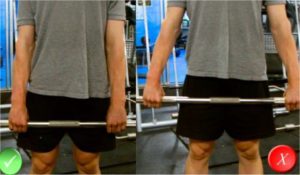
For Sumo deadlifters there is no excuse for anything but a vertical arm position when you grip the bar, however for those using a conventional deadlift stance and also having a large build there is always going to be the need to compromise with achieving a vertical arm grip due to the need for having the arms on the outside of your legs and larger torso.
Double Overhand Grip
This is the ‘classic’ grip, where both palms are facing towards the lifter. This is the default grip. If you were to ask a person who has never done a deadlift before to pick a the weighted bar, this is the way they would instinctively grip it. Double overhand grip is the most basic of grips for deadlift however, as you progress to heavier weights the bar will rotate in the hands making the challenge of maintaining grip harder.
Mixed Grip
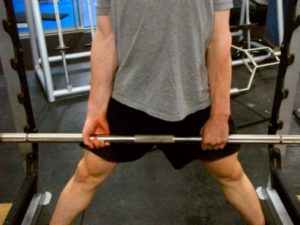 The Mixed grip is the most common grip used in powerlifting for deadlift, similar to the double overhand grip except one hand is rotated to grip the bar in a supine position (palm facing away from the body). With this alteration the bar will no longer roll in the hands giving you a much stronger grip on the bar.
The Mixed grip is the most common grip used in powerlifting for deadlift, similar to the double overhand grip except one hand is rotated to grip the bar in a supine position (palm facing away from the body). With this alteration the bar will no longer roll in the hands giving you a much stronger grip on the bar.
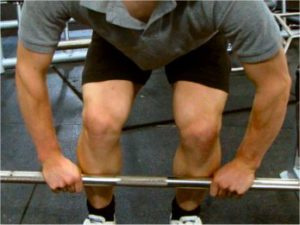
It has been claimed by some that a mixed grip increases the chance of a torn bicep on the supine arm, however,
Deadlifting mixed grip doesn’t cause biceps injuries. Deadlifting with bad form does.
Deadlift, if done with bent elbows will put large amounts of pressure on the bicep in the same way that a heavy bicep curl will. Remember you are deadlifting, not curling, Your elbows must be locked from start to finish. Set-up with straight arms.
Double Overhand Hook Grip
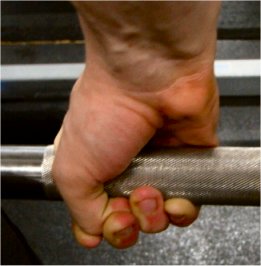 The double overhand hook grip is only slightly different to a normal overhand grip with the exception of the thumb position. With a hook grip the thumb is placed between the bar and your fingers. Instead of wrapping your thumb around your fingers, it rests under them. This prevents the bar from rolling, and provides a very strong grip but there are drawbacks.
The double overhand hook grip is only slightly different to a normal overhand grip with the exception of the thumb position. With a hook grip the thumb is placed between the bar and your fingers. Instead of wrapping your thumb around your fingers, it rests under them. This prevents the bar from rolling, and provides a very strong grip but there are drawbacks.
Using a hook grip hurts, a lot, with many lifters reporting the loss of feeling in the thumb. There is no way around this problem other than to get used to it. Hook grip is more suited to powerlifters with longer finger who will have far less pain than a lifter with short fingers, If you have short fingers, stick to using a mixed grip for deadlift.
I have definitely found that as I lift heavier with multiple reps I need the mixed grip. I am contemplating gloves as the minute my hands rip up I find it so much harder.
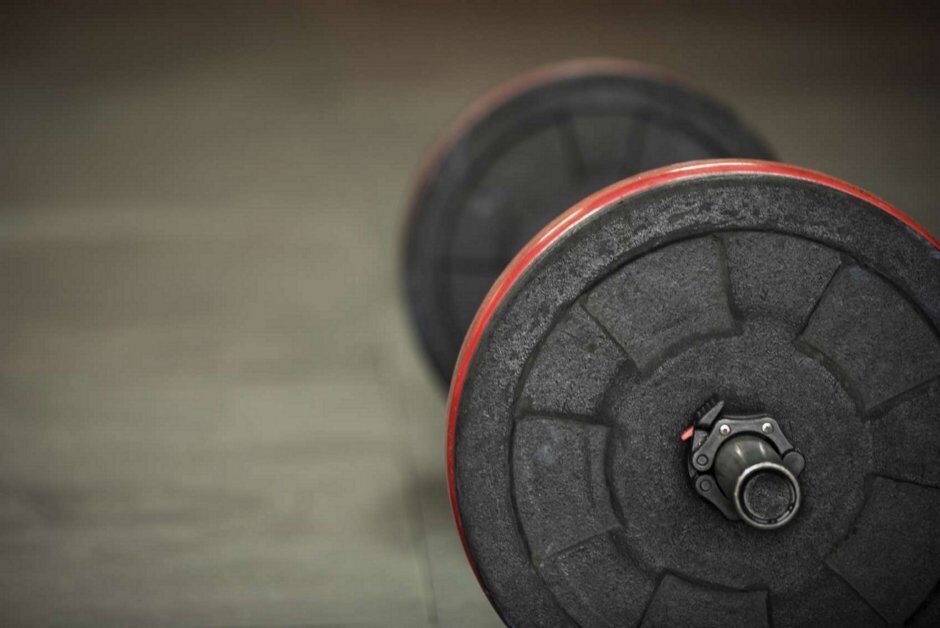

Goodness there is a lot more to it than first realising …well done